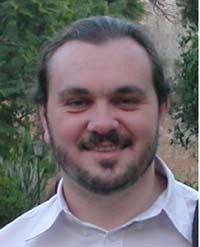You are here
French historian outlines reforms of 19th century Transjordan
By Saeb Rawashdeh - May 04,2023 - Last updated at May 04,2023
AMMAN — Between 1866 and 1871, Rashid Pasha, the governor of Damascus, led the first major administrative change by creating the district of Ajloun, and later the district of Salt, noted a French historian at the Arab Centre of Research in Amman on Sunday.
“In the late 1870s, the Ottoman Transjordan was included into Tanzimat reform that took place in the whole Ottoman Empire,” said Norig Neveu from the French institute Ifpo during his lecture titled “Ottoman missions in Southern Transjordan from the late 19th century onwards: education and preaching”.
Two main Tanzimat reforms in Transjordan took place in 1860s: implementation of the land hold and administrative changes, which initiated new Ottoman institutions, Neveu said, adding that a new hierarchy was established, which boosted modern transport communications within the state.
“The most famous communication line was the Hijaz Railway,” Neveu said.
In 1892, a new district, with its administrative centre in Maan, was created and it included Karak and Tafileh, the historian continued. One year later, Karak became a separate district, which initiated the arrival of more Ottoman representatives, troops and judicial staff.
“The education reform within the empire [1838-1869] included the religious education reform, and its aim was to train civil servants who would be able to rule the empire,” Neveu said, adding that secondary schools and universities were established.
The premise of free education encouraged the opening of schools in all areas of the Ottoman Empire, and students were both Muslims and non-Muslims, Neveu stressed, adding that the educational system had primary schools, preparatory schools, high schools and religious schools.
Networks of schools spread from administrative centres like Karak and Maan to smaller towns like Shobak. Schools for girls were also opened, and female teachers came to Transjordan, Neveu said.
“Teachers were following official curricula and religious teachers were targeting not only pupils, but the general population,” Neveu said.
Related Articles
AMMAN — Structural and institutional crises, wars, insurgencies and territorial losses, as well as restructuring and reform, characterised t
AMMAN — In the early 19th century, after Napoleon’s brief invasion of Egypt and his attempts to push French armies towards Syria between 178
AMMAN — The Great Arab Revolt is the cornerstone of Jordan’s political legitimacy, according to an Oxford University professor.During a


















